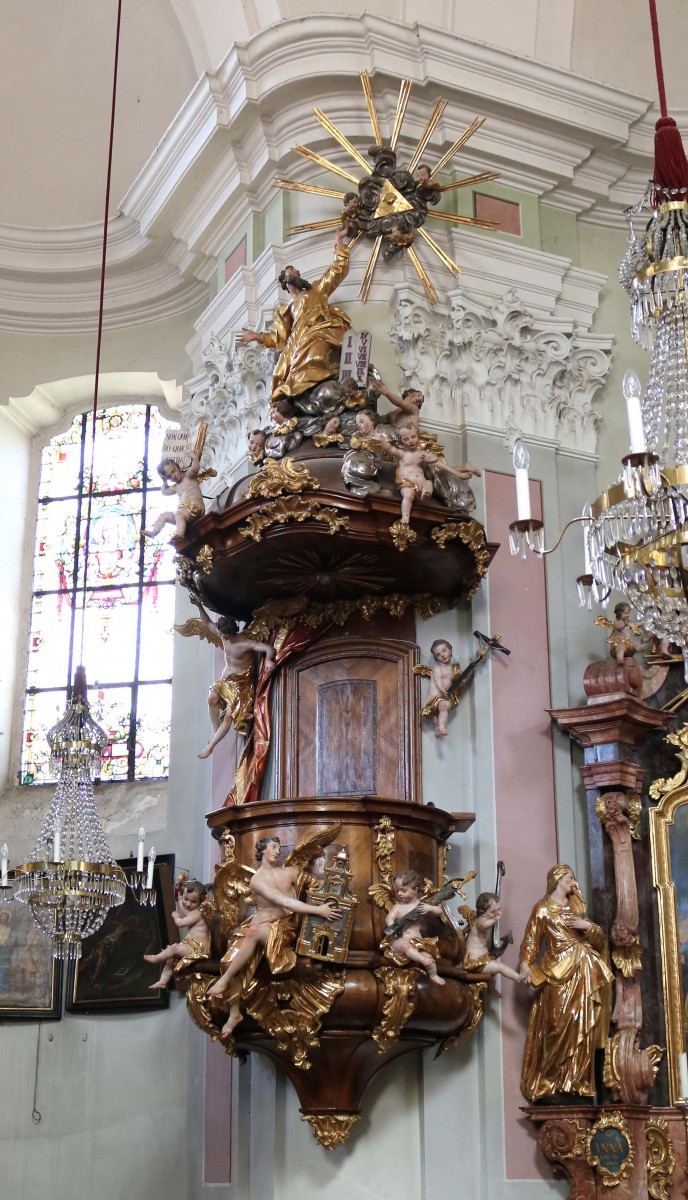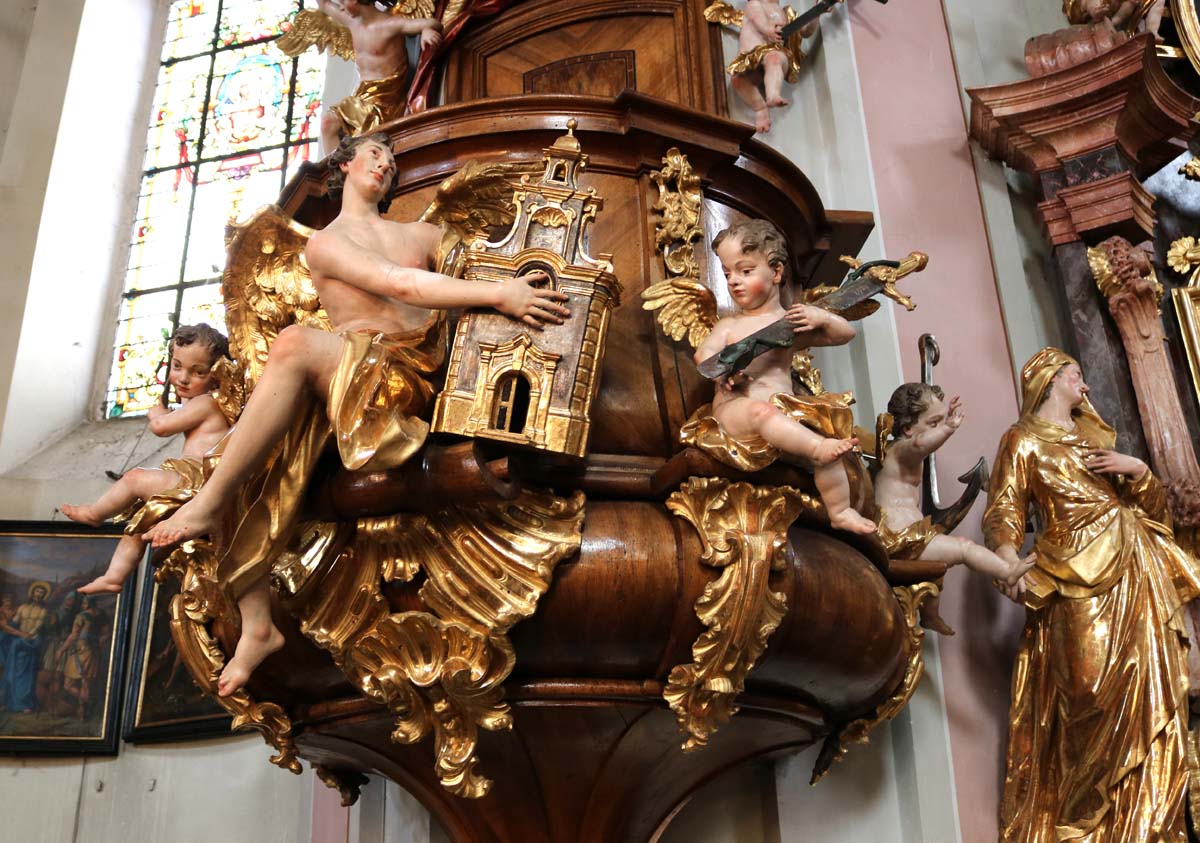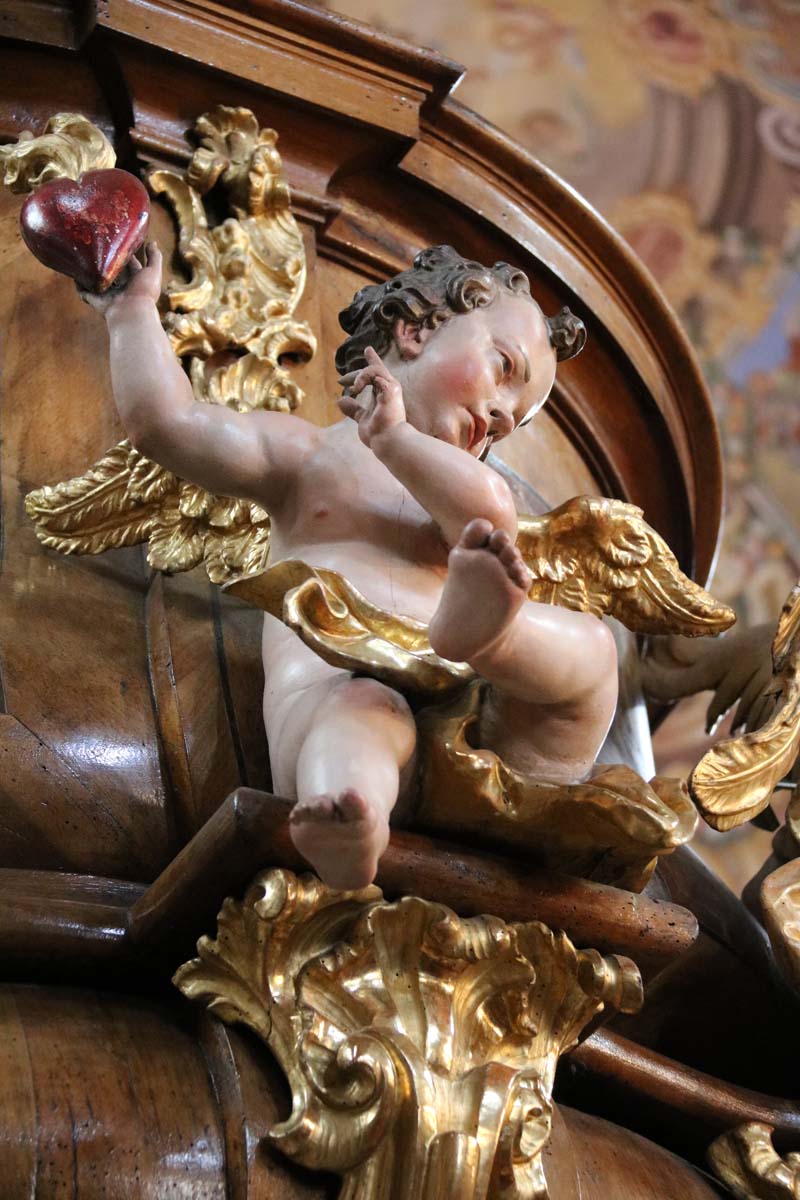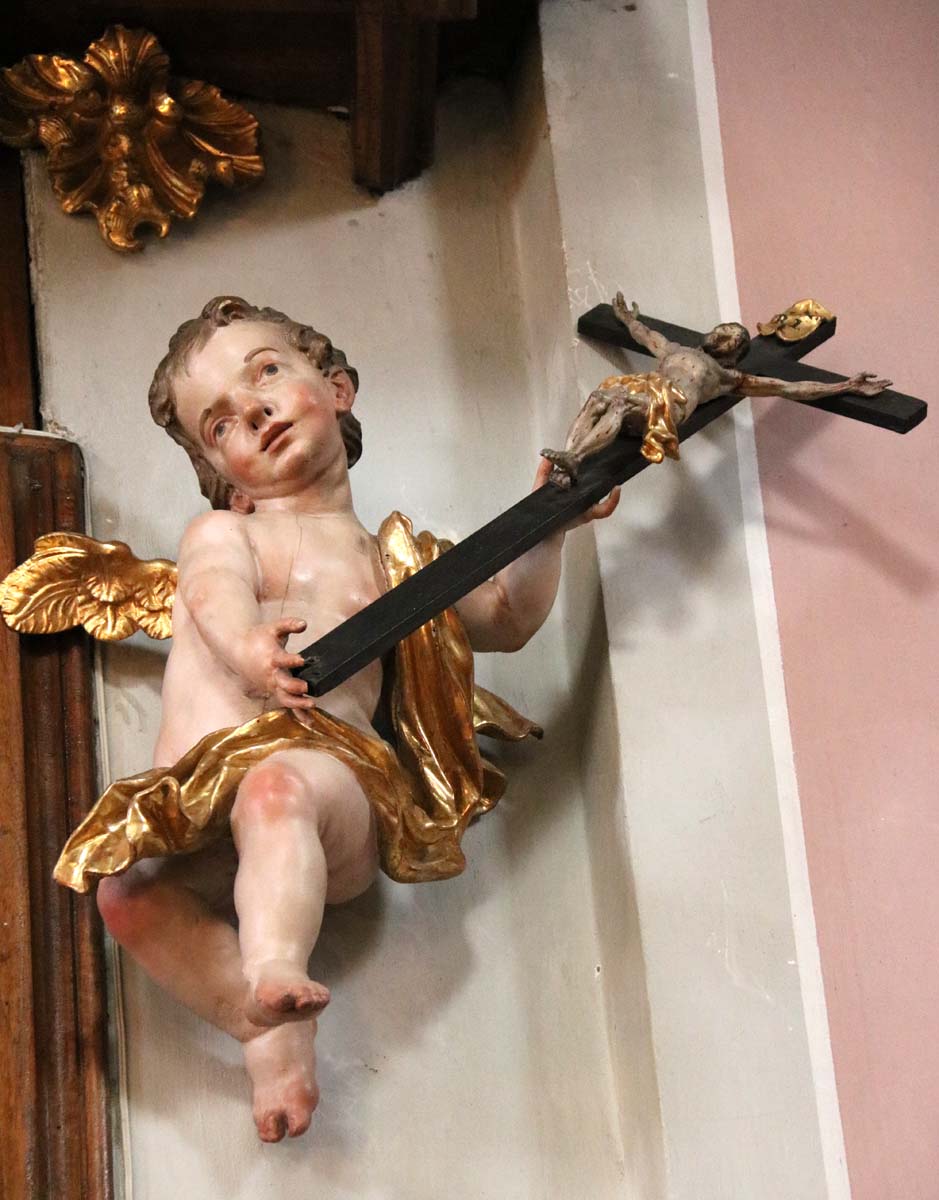Location
Austria, Styria, Ehrenhausen
Parish and Pilgrimage Church Our Lady of Sorrows (Pfarr- und Wallfahrtskirche Schmerzhafte Mutter Maria)
Ehrenhausen
Artwork
The pulpit of the Parish Church Our Lady of Sorrows in Ehrenhausen
Type
Pulpit
Inscriptions
- "NON QUAE RO, QUAE VESTRA SUNT, SED VOS 2. Cor: C: 12. V. 14." (on the book on the canopy)
- "I II III / IV V VI VIII IX X" (Tablets of Law beside Mose)
Critical History
The ground stone of the new parish church of Ehrenhausen was layed in April 1751 under the patronage of the noble family Eggenberg-Leslie and in 1753 the building must have been finished for the greater part.1 The payments in 1752 and 1753 well documented in the parish archives confirm this state of the construction progress.2 So far, no evidence has been found in the archives to identify the architect. Numerous attributions based on stylistic similarities were suggested by different researchers, for example Joseph Hueber, Johann Georg Stengg, both from Graz, or Johann Fuchs and Josef Hoffer from Maribor.3 The consecration of the parish and pilgrimage church Our Lady of Sorrows was held on July 5, 1754, which date is also confirmed by the chronogramme on the pedestal of the Pietà on the façade above the main entrance.4 The high altar, the pulpit and two side altars were attributed to Philipp Jakob Straub due to stilistic reasons by Andorfer in 1938; Schweigert attributes the side altars to Veit Königer, but agrees with the assumed authorship of Philipp Jakob Straub regarding the style of the high altar, the pulpit and the decoration of the church façade; he dates the pulpit between 1752/53 and around 1755.5 New research in the parish archives, now in the archive of the diocese Graz-Seckau, could not confirm any payment to Philipp Jakob, only to his younger brother Joseph Straub from Maribor, probably for the decoration of the façade.6 The polychromy and gilding are documented for the year 1770.7 The figural decoration of the pulpit shows strong resemblance to the pulpit his brother Johann Baptist Straub made for the Schwarzspanierkirche in Vienna 1730-1734, now in Laxenburg, especially the composition of Moses on the canopy or the angel holding the drapery beside the door.
Construction / Execution
The pulpit is fixed to the wall on the left side, between the niche with the large side altar and the small altar on the triumphal arch. It can be accessed by a door from the sacristy. The polychrome figures are partly gilded and set upon the wooden, veneered carcass, which is also decorated with gilded rocaille ornaments. One angel-putto holding a crucifix is mounted directly to the wall on the right side of the rear panel, the glory with the symbol of the Holy Trinity is fixed above the canopy of the pulpit in the cornice above the Corinthian capital.
Components
- Carpentry
- Completed: ca. 1753 – ca. 1754
- Patron(s): Maria Charlotte of Eggenberg , noble; Maria Theresia Josepha of Eggenberg, noble; Cajetan Count Leslie , noble
- Technique(s): sawing
- Material(s): wood
- Sculpture
- Author: Philipp Jakob Straub (Wiesensteig 1706 – Graz 1774)
- Completed: ca. 1753 – ca. 1754
- Patron(s): Maria Charlotte of Eggenberg , noble; Maria Theresia Josepha of Eggenberg, noble; Cajetan Count Leslie , noble
- Technique(s): wood carving
- Material(s): wood
- Polychromy
- Author: Franz Rahmer
- Completed: ca. 1770
- Technique(s): water gilding
- Material(s): gold leaf
- Polychromy
- First Re-Gilding
- Author: Bauer
- Completed: ca. 1863 – ca. 1864
- Patron(s): multiple, parishioners
Comment
The re-gilding of altars and figures of the church took place in 1863/64 under parish priest Franz Kleinoschegg A donation of 2100 fl. by Maria Hammer, a farmer's wife, made the restauration works possible.8
Images
- Ehrenhausen, Our Lady of Sorrows, pulpit (photo by Julia Strobl, 2018)
- Ehrenhausen, Our Lady of Sorrows, lower part of the pulpit (photo by Julia Strobl, 2018)
- Ehrenhausen, Our Lady of Sorrows, putto with Sacred Heart on the lower part of the pulpit (photo by Julia Strobl, 2018)
- Ehrenhausen, Our Lady of Sorrows, putto with crucifix, on the right side of the pulpit (photo by Julia Strobl, 2018)
- Ehrenhausen, Our Lady of Sorrows, Putto with book on the canopy of the pulpit (photo by Julia Strobl, 2018)h
- Ehrenhausen, Our Lady of Sorrows, The Glory of Mose on the canopy of the pulpit (photo by Julia Strobl, 2018)h
Catalogue entry prepared by Julia Strobl
Recommended citation: Julia Strobl, The pulpit of the Parish Church Our Lady of Sorrows in Ehrenhausen , in: TrArS – Tracing the Art of the Straub Family, 2018, (accessed 14/11/2025) URL






